10 young and reasonably priced artists you can find at Artissima
Who said that one has to spend fortunes to buy art? Even in the most emblazoned fairs it is possible to find works by interesting young people, and which do not cost huge sums of money. They may not become artists who will revolutionize art history, but these are still names that have already been presented on international stages, have good resumes, and come up with compelling works. We have chosen ten of them, all of whom are at the fair with works that range roughly from 2,000 to 8,000 euros for small and medium formats (but some of the artists below sell for even less). Here are which ones.
1. David Moses (Bonn, 1983). Presented by Galerie Russi Klenner
German artist David Moses has studied how to transcribe movement and time onto his paintings, often using film material as a point of parenza. Since 2017, his practice has made use of still images from Walt Disney’s Merry Symphonies series (1929-1939), which form the basis of his paintings. According to Moses, these films are the example that best explains the change in perception from the evolution of mass media to the present: they are often based on classical myths that illustrate ancient ethical issues. Moses’ focus is on figures, actions, and mimicry rather than content, with painting in which figuration toward a form of abstraction that makes use of drawing, fragmentation, and superimposition. Moses’ focus is on movement: layers of drawings in pastels are followed by layers of acrylics that facilitate the process of dissecting the images, and in turn compose layers that form the basis for new layers. Moses’ idea is that through this medium we communicate speed, visual power, and the extravagances of Walt Disney films behind an abstract “curtain.”
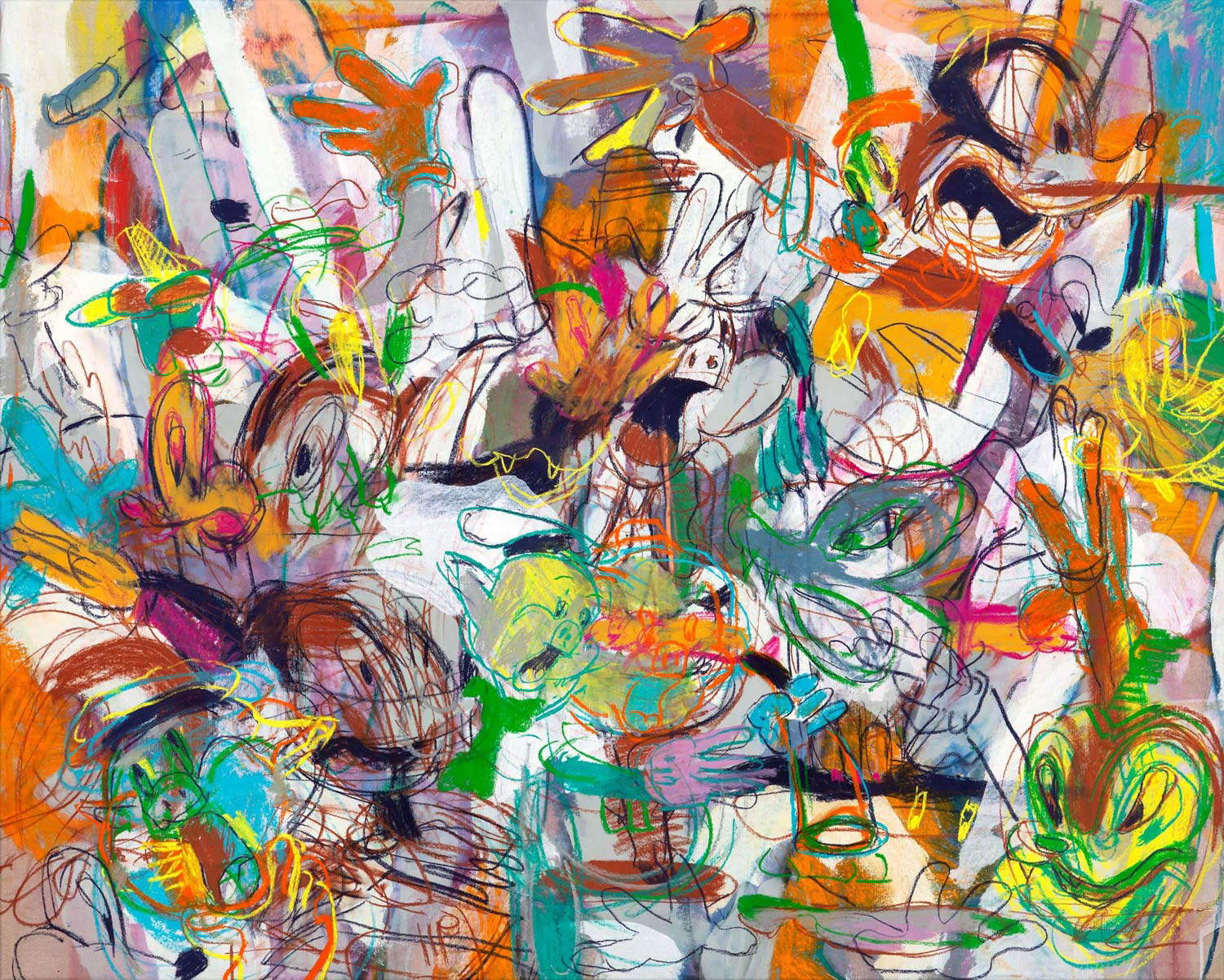
2. Isabel Simões (Lisbon, 1981). Submitted by Bruno Murias
Isabel Simões’ work uses a variety of media, from painting to sculpture via drawing, and starts from everyday spaces and objects that become pretexts for examining the theme of perception and the relationship to the visible as an intuitive field of action. At Artissima, the Portuguese artist presents some works from the series Vistas para o avesso do mar, which analyzes the different possibilities of interpretation that an image offers. Through painting, but also through drawing, Isabel Simões seeks to expand the possible readings and meanings of an object. In this case, the starting point is the sea, seen as a recognizable and significant element, capable of offering different levels of interpretation depending on the relationship the viewer establishes with the sea. The paintings in the series, installed at different heights, reflect the connection between the viewer and the surface of the sea and propose a kind of “immersion” in the water. Light and color transform the form, density, and transparency of water and give expressiveness to the sea, making it recognizable but at the same time removing it from immediate forms of categorization.
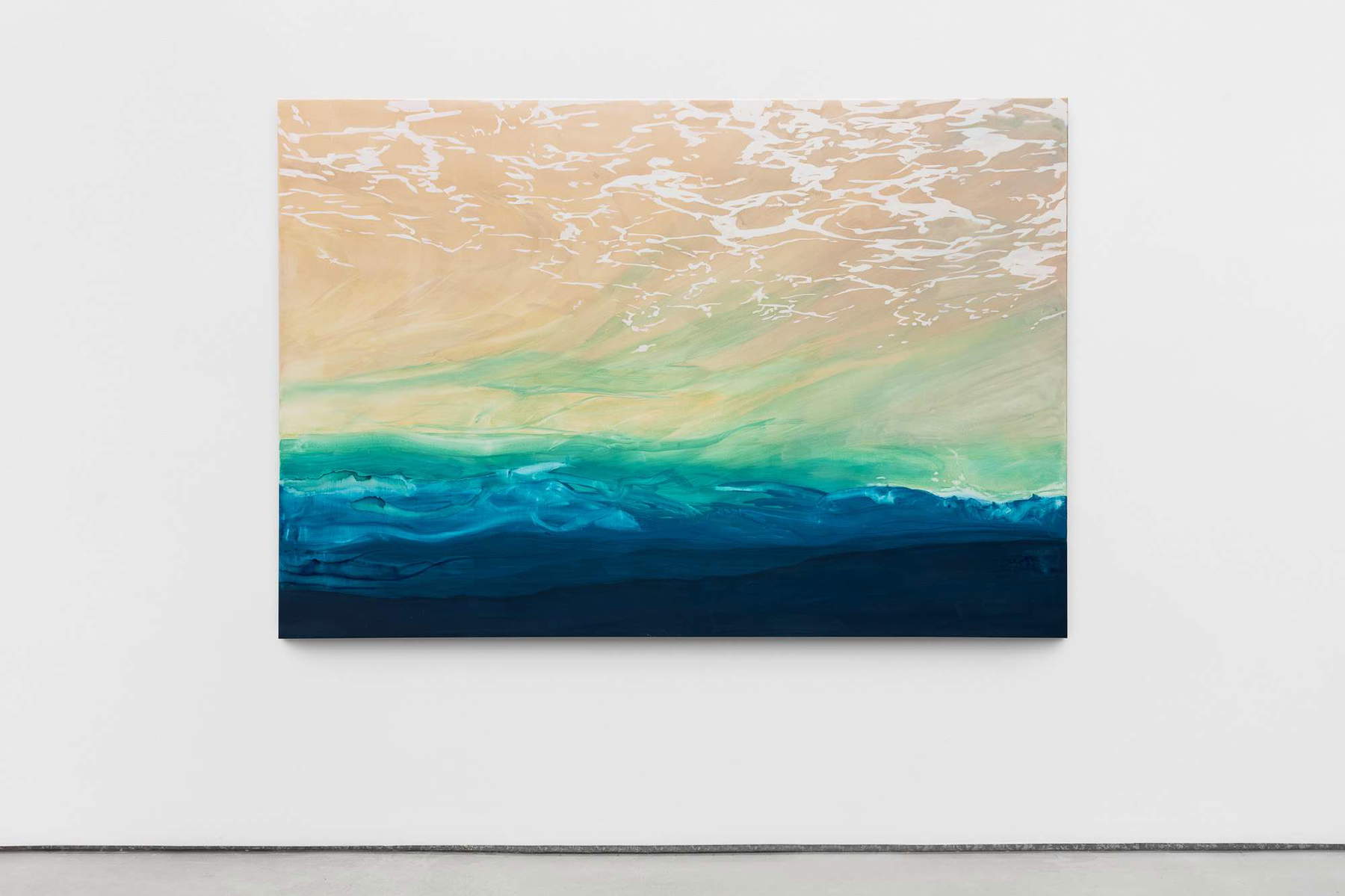
3. Vicky Uslé (Santander, 1981). Submitted by Alexander Levy
Spanish artist Vicky Uslé’s most recent works reflect the solitude in which she has chosen to live, in the region of Cantabria, where she was born: contemplation and admiration of her garden and natural phenomena thus inspire her work. In Uslé’s work, the representation of nature and the garden is not merely illustrative, but rather a transposition of a moment of perception, of what is seen, of the physical experience that is generated, and of the existing social and collective connotations intrinsic to the subject. Uslé wants to invite us to ask ourselves what part of the garden we are looking at, to focus on the sensations that observing nature conveys to us. Her recent works therefore make use of an impasto of lines and luminous forms enhanced by dark backgrounds that are intended to evoke images perceived by the retina, thus becoming almost “abstract scenes of meditative contemplations of nature” (Lydia Korndörfer).
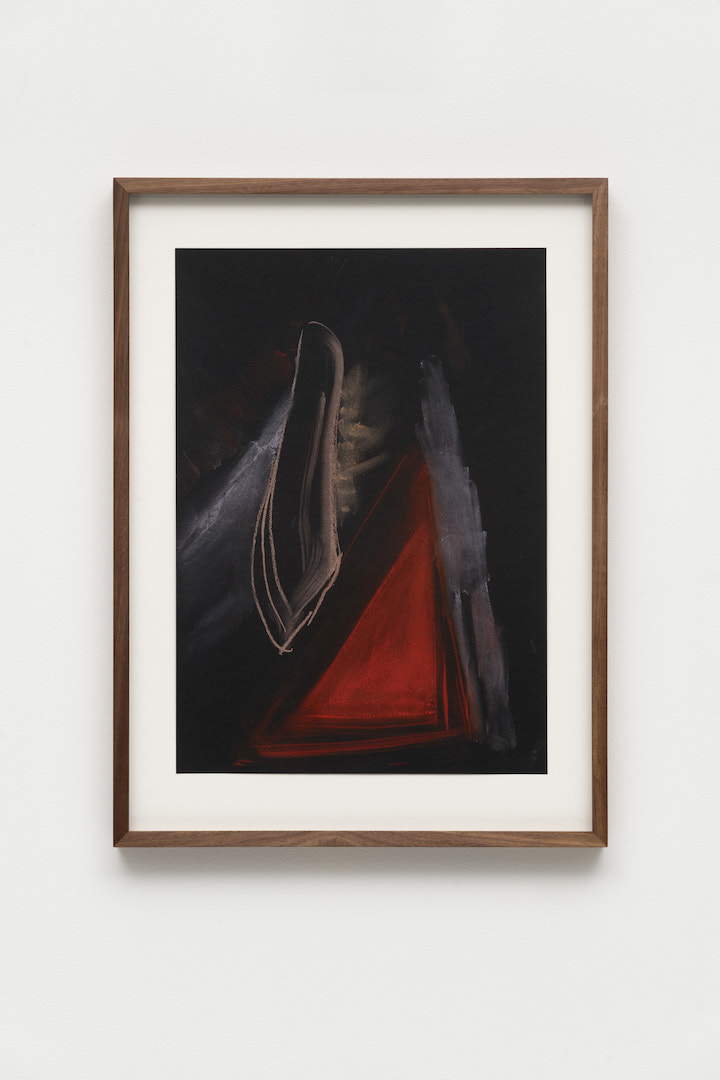
4. Giulia Dall’Olio (Bologna, 1983). Submitted by Studio G7
Presented by Studio G7 in the Drawings section, Giulia Dall’Olio exhibits some drawings dedicated to the theme of nature and its relationship with human beings: these are works that, although they appear very precise, do not start from photographs, but from personal memories that the artist reworks. “Whoever looks at his drawings,” writes Irina Zucca Alessandrelli in the text accompanying the exhibition, “is led to get lost in the sign between lights and shadows. In fact, Dall’Olio intervenes on a dark charcoal base with clinical erasures made with the most diverse types of erasers, more or less soft and that the artist sculpts according to the type of nature he wants to return. Her work seeks to ideally render fragments of nature that man in his constant intervention in the environment has literally erased.” For Giulia Dall’Olio, the sheet is a living material from which she “takes away parts, tearing them cleanly, as if they were chiseled. The subtracted part becomes a new work that can never again be reassembled in the oneness from which it was forever excluded. These rescued fragments of nature in charcoal struggle with the colored pastel and acrylic that represent human intervention, almost in search of a hoped-for and unattainable balance.”
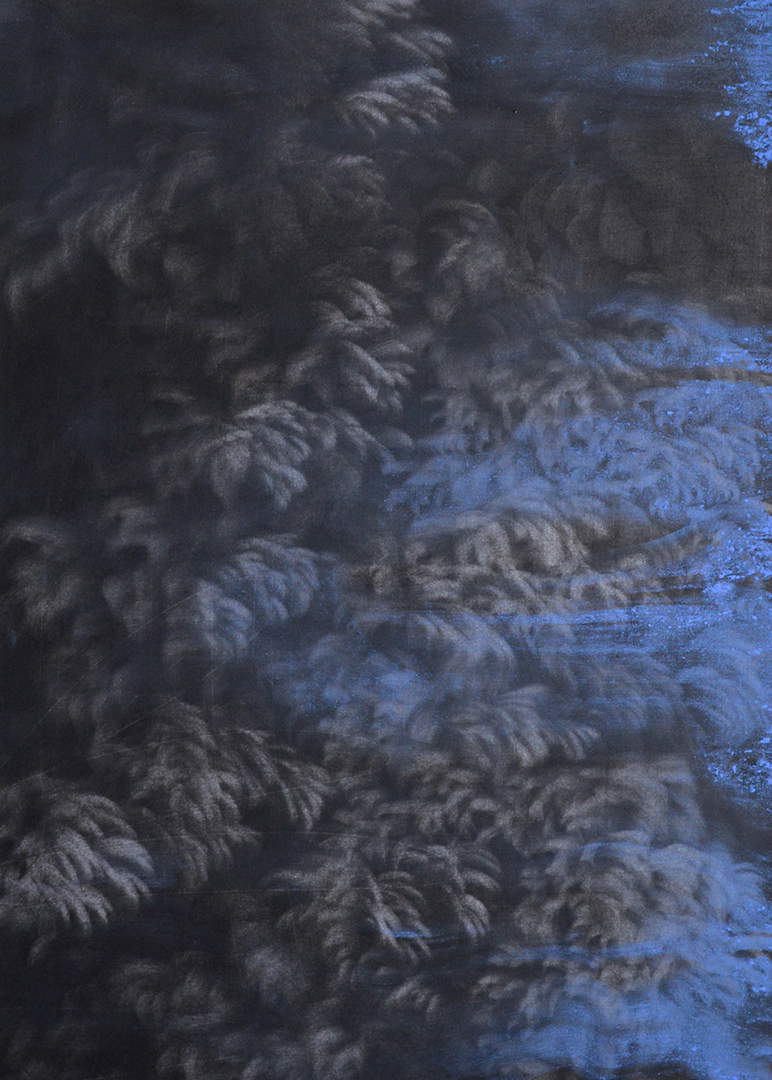
5. Mia Chaplin (Cape Town, 1990). Submitted by whatiftheworld
South African Mia Chaplin is a painter and sculptor: whatiftheworld gallery devotes a monographic booth to her, where paintings and ceramics are on display. The latter are based on classical vases and urns: the artist creates frames by hand, which she covers with fabric, paper and plaster, and then finishes with layers of oil paint. The subjects refer to the feminine world and its sensuality, “all wrapped in a strongly feminist spirit,” reads the presentation text. The sculptures are reminiscent of pregnant women, and the hues and density of the paint layers aims to evoke the texture and tones of skin. In the paintings presented at Artissima, we see intertwined bodies that harken back to nineteenth-century odalisques and Renaissance Venuses: Mia Chaplin’s goal is to appropriate “the different styles of these classical eras to portray unconventional female subjects, superimposing them on lush environments and landscapes.” For Chaplin, moreover, painting is a “fermentation process”: despite the familiar and seemingly serene appearance of her paintings, the artist aims to provoke mixed feelings in the viewer, generating a state of transformation within the process of observation.
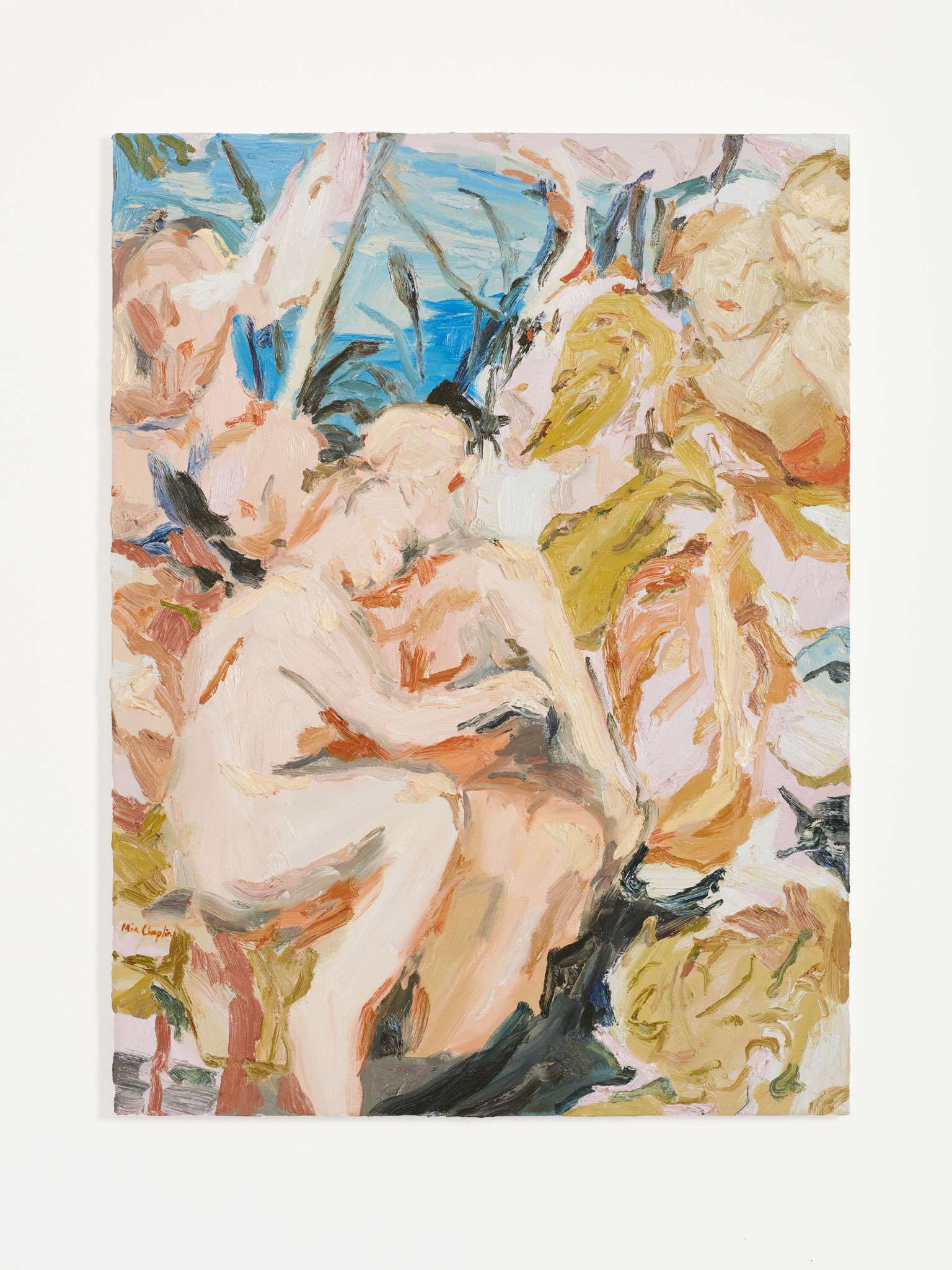
6. Teresa Gargiulo (Vico Equense, 1996). Submitted by Tiziana Di Caro
An emerging artist, Neapolitan Teresa Gargiulo rose to prominence at the JaguArt 2020 prize, organized by Artissima and Jaguar Land Rover, reaching among the finalists, which won her an exhibition-prize at the Tiziana Di Caro gallery, which then decided to continue working with the young woman. Her work touches on the intimate and private and makes abundant use of words. “My research,” says Gargiulo, “considers language and the evocative power of words as starting points to investigate the real that surrounds me. Reality is studied through the lens of my everyday and my personal, elements then sublimated to universality, pretexts for narrating identity and its changes in space and time. Observing, analyzing, decontextualizing, arriving at the minimal structure of things, are elements my practice develops mainly through writing, drawing, photographic documentation and sculpture, sometimes operating minimal interventions on the given matter, sometimes operating unusual juxtapositions from which a new form originates.”
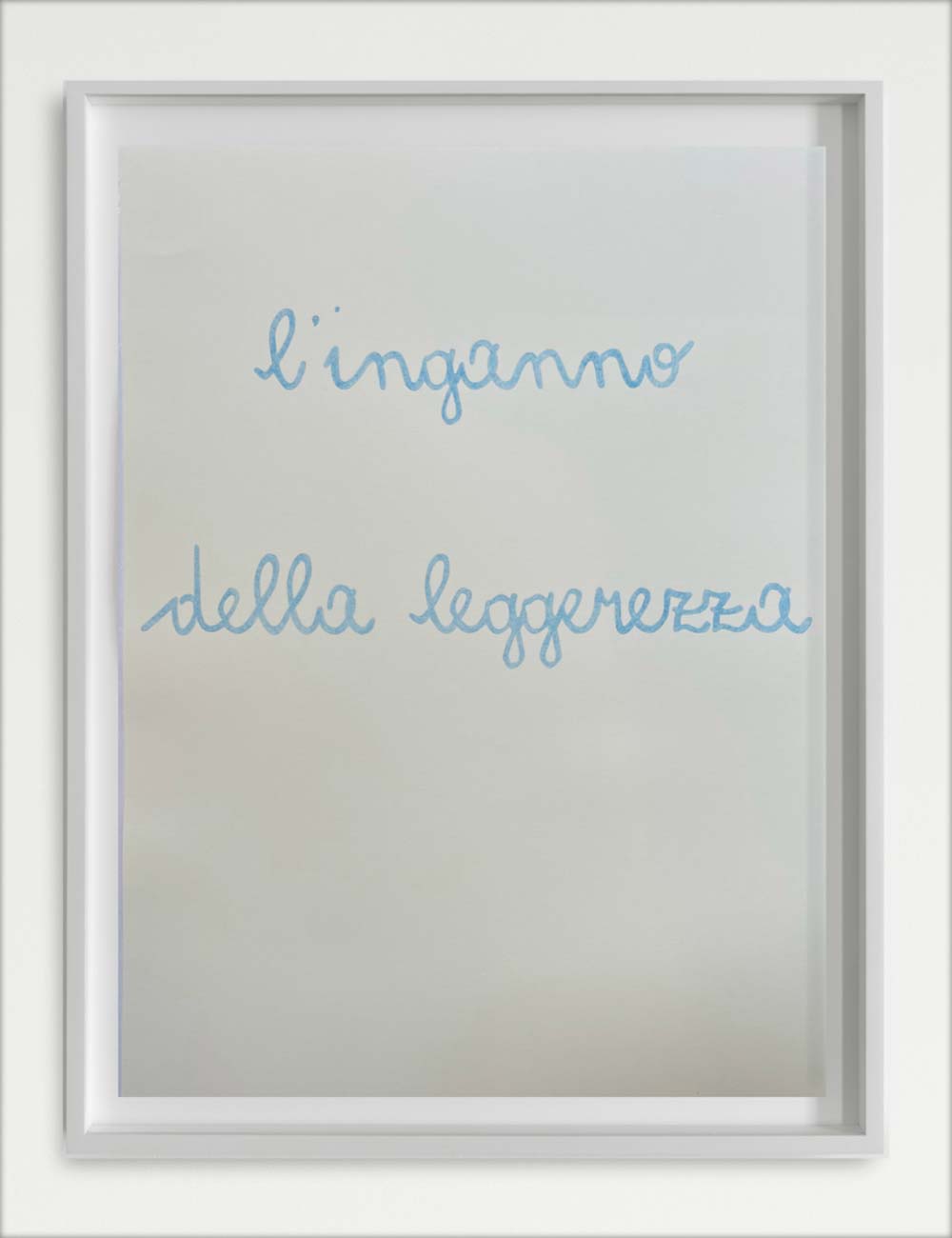
7. Vasilis Papageorgiou (Athens, 1991). Presented by A Gallery.
Active between Athens and Amsterdam, Vasilis Papageorgiou, brought to Artissima by Piacenza-based Una Galleria, presents his most recent production in Turin: works in ceramic and steel that are inspired by sunset, the time of day when, free from work duties, we wait for evening. Papageorgiou’s gaze starts from a domestic interior and expands out the window, focusing on these moments of leisure and distraction where there is no obligation to think or act. Papageorgiou recreates the hues of sunset with clay, a natural, earthy material, evoking the image of a planet with cracked soil or lazy evenings spent thinking. The titles of these works (e.g. 20:11 or 19:53) indicate the sunset time of the day when the works were finished. More broadly, Papageorgiou’s practice scours the everyday in search of the fractures and moments of pause within which new scenarios and possibilities can emerge: for the Greek artist, it is a kind of form of resistance to the status quo, to a traditional scanning of time, strictly divided between work time and leisure time, between productive activity and unproductive pause. What Papageorgiou wants to bring out is the value of time, of materials, of art.
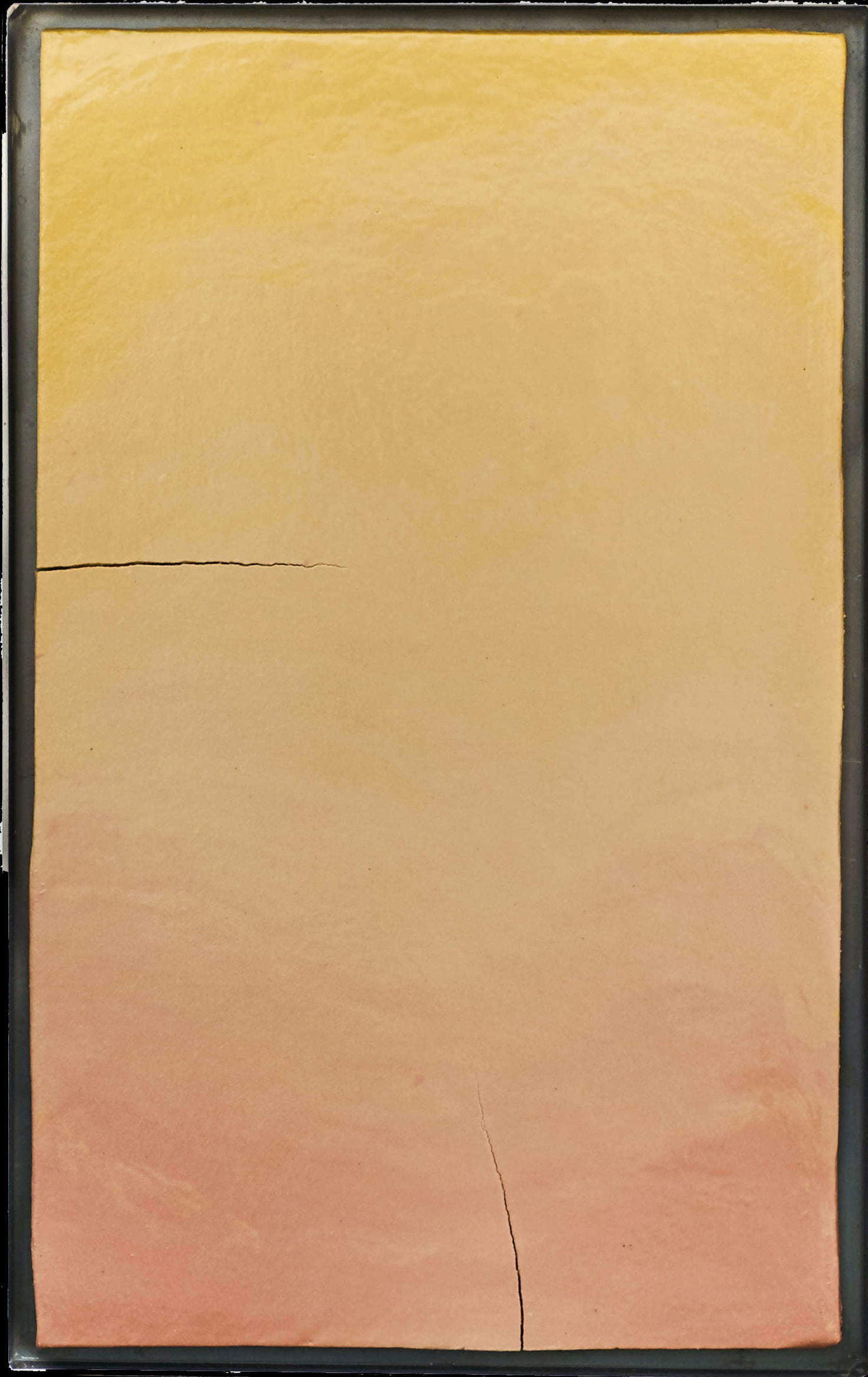
8. Keto Logua (Sukhumi, 1988). Submitted by LC Queisser
Georgian artist Keto Logua trained between her native country and Germany, where she works: her work starts from the scientific investigation of natural phenomena, which becomes the basis for her sculptures her films. “Using scientific discoveries,” write Saim Demircan and Maurin Dietrich in the critical text, “Logua makes objects by applying technological and artistic procedures to forms of the past: for example, by 3D printing a primordial flower or making a metal cast of the spine of a stegosaurus.” A “material translation,” as the artist herself called it, that becomes “emblematic of her research in which she often involves scientists, scholars and botanists, as well as architects and illustrators, who help her find the language to visualize her works.” A quest that, by Keto Logua’s own admission, bears childlike traces, those of the child who keeps questioning the scale of things, from the vastness of the universe to the beauty of the world of which we are a part.
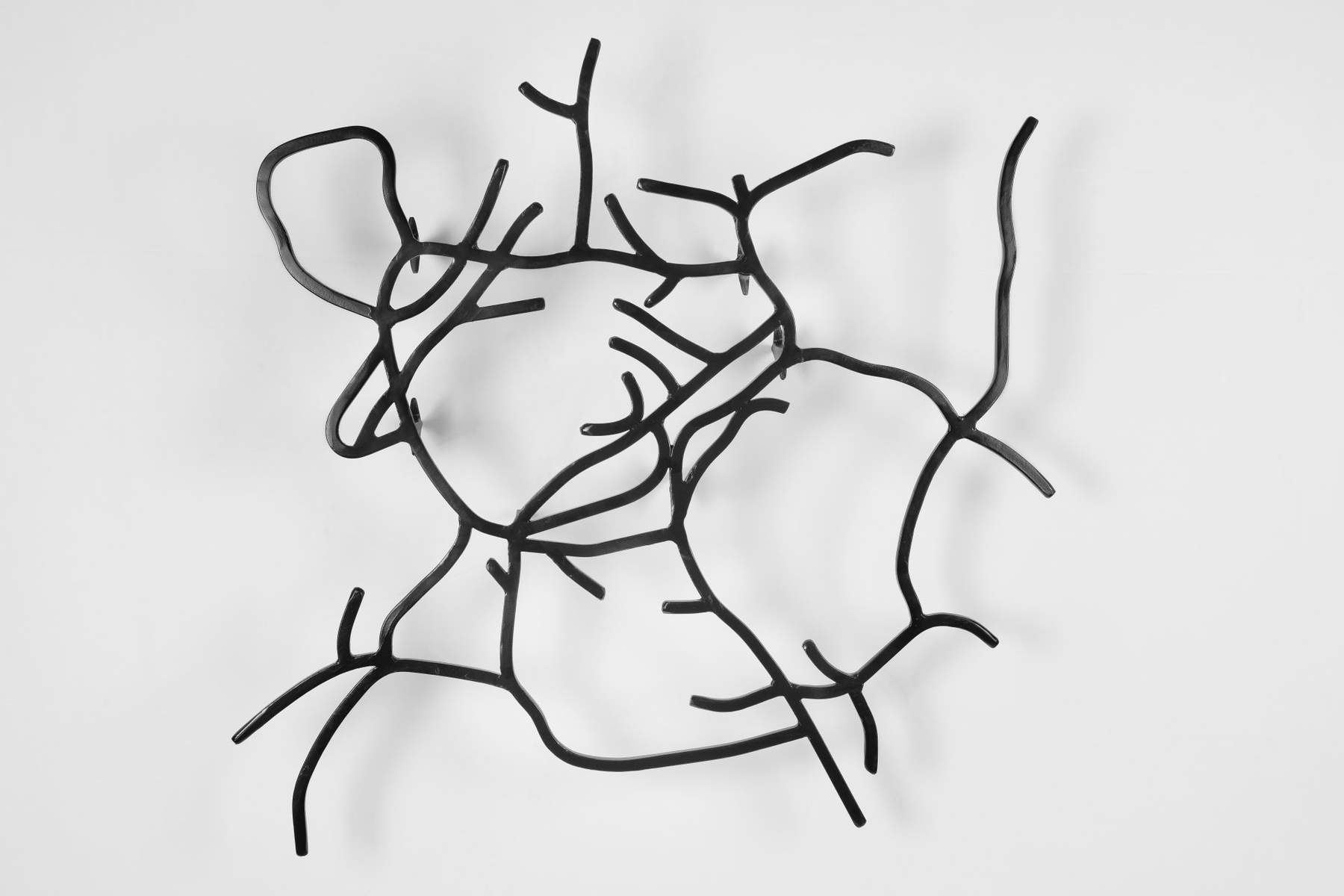
9. Kristin Wenzel (Gotha, 1983). Submitted by Suprainfinit
German Kristin Wenzel is presented by the Romanian gallery Suprainfinit with several ceramic works. Kristin Wenzel’s recent research deals with the theme of public space, imagining structures and alternative ways of dealing with it (which she often coins as proposals or models). With installations, sculptures and interventions, Wenzel addresses the implications of public architecture both as a “memory foam” (inscribed in its particular history) and as an open structure that allows for departures from its original design. The ceramics exhibited at Artissima, presented in 2021 at the Lovers in the Night exhibition at the Goethe-Institut in Bucharest, see nature as a site of nostalgia and desire: her flowers convey an ideal of “floral femininity,” as critic Frank Motz has written, that camouflages, deceives, and transforms, just as the orchids from which these compositions are inspired do. A world of images that awakens joys and expectations but can also be a source of disappointment.
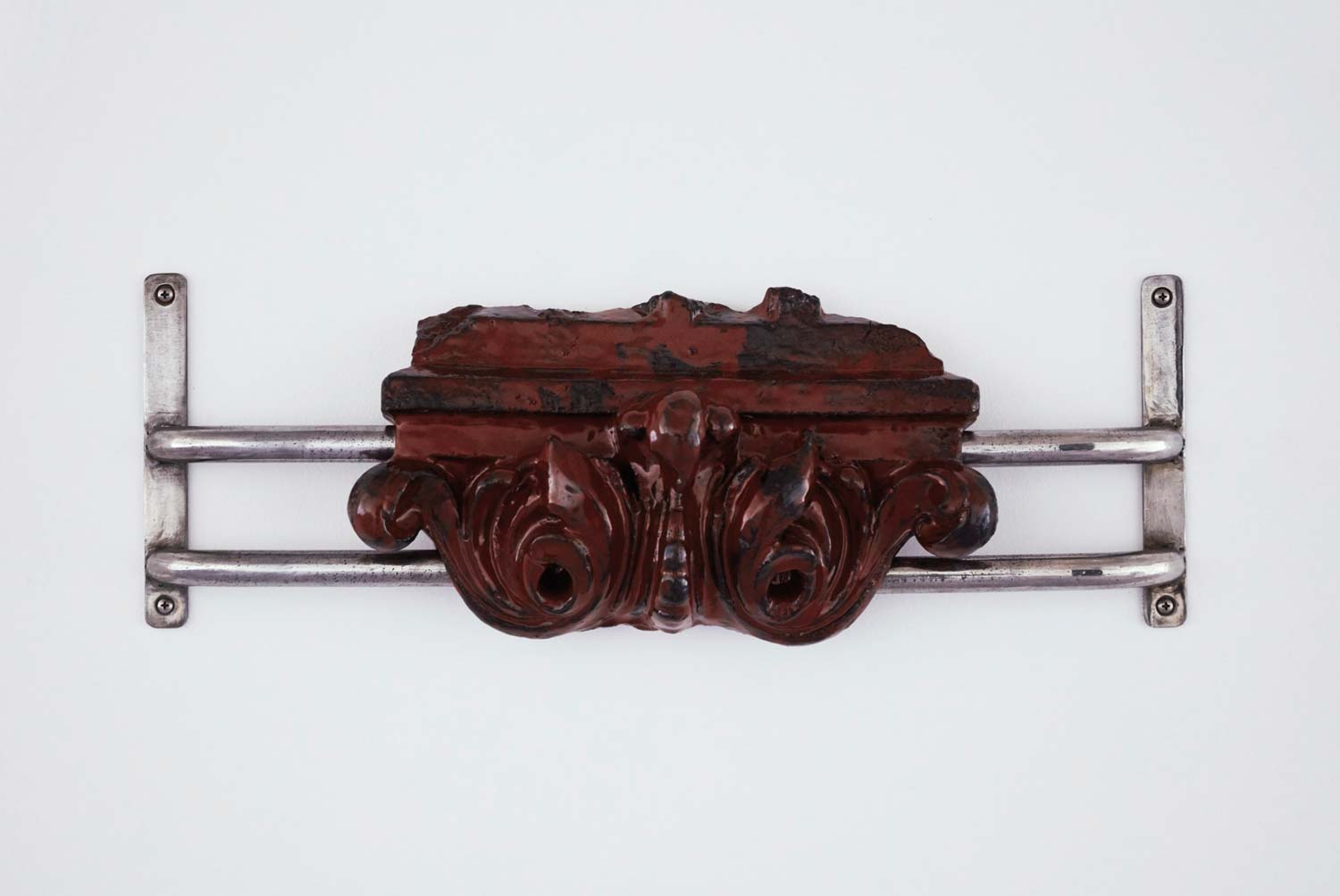
10. Victoria Colmegna (Buenos Aires, 1989). Submitted by Weiss Falk
Painting, collage but also architectural models are the mediums that Argentine Victoria Colmegna usually uses in her practice. Her work, Saim Demircan and Maurin Dietrich recall, “explores the styles and community dynamics that define groups and subcultures. For example, her latest paintings and sculptural objets trouvés are based on Emma Cline’s book, The Girls, whose protagonist is a California teenager who joins a Manson Family-style cult in the 1960s. The artist reimagines the look and feel of the era through the eyes of a fictional character. Throughout his practice, art is used to be copied or produced by fans and is often treated as a malleable form that fits the artist’s mood.”
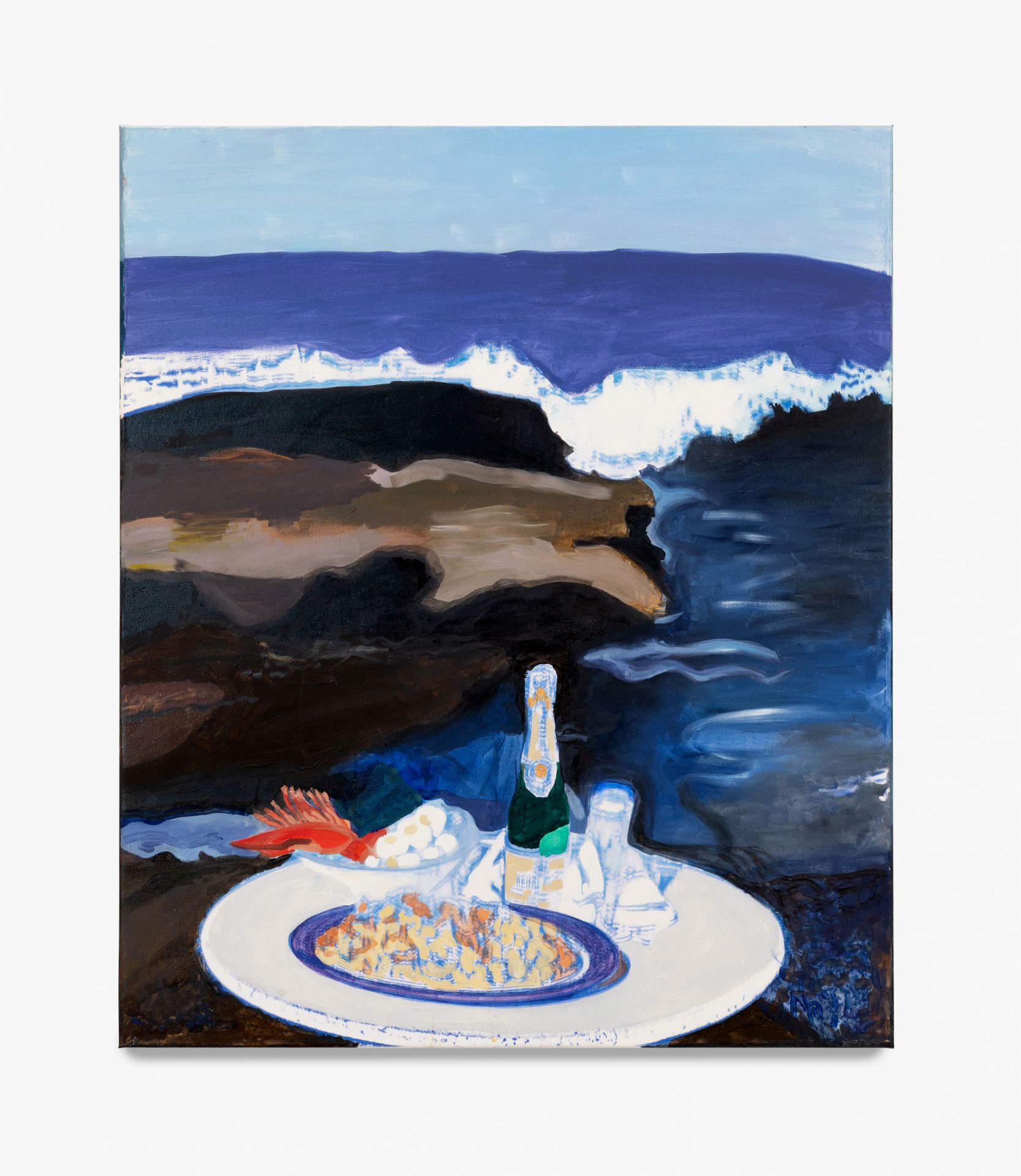
Warning: the translation into English of the original Italian article was created using automatic tools. We undertake to review all articles, but we do not guarantee the total absence of inaccuracies in the translation due to the program. You can find the original by clicking on the ITA button. If you find any mistake,please contact us.




























